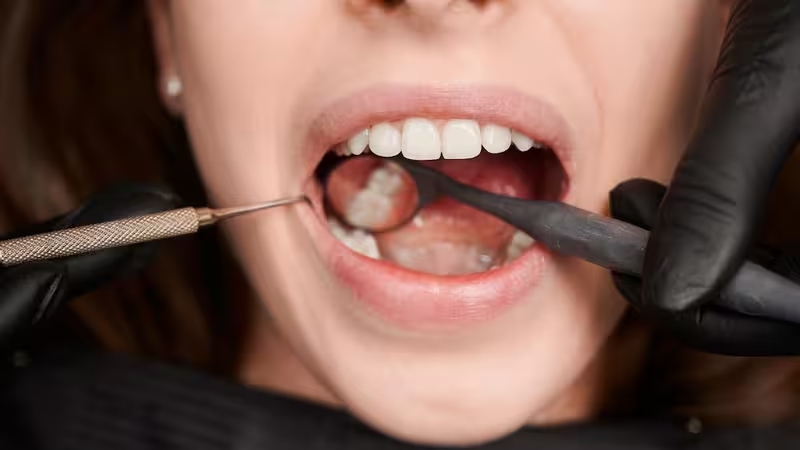Tooth cavities are a common dental issue, but when they occur on the front teeth, they can be particularly concerning due to their visibility. Properly addressing a cavity in a front tooth is crucial to maintaining both oral health and the aesthetic appeal of your smile. In this comprehensive guide, we’ll explore everything you need to know about cavity filling in front tooth, including treatment options, procedures, and aftercare tips.
What Causes Cavities in Front Teeth?
Cavities in front teeth are primarily caused by plaque buildup, which results from poor oral hygiene, frequent consumption of sugary or acidic foods, and other factors. The following are the main contributors to cavities:
- Poor Brushing Habits: Inadequate brushing leaves food particles and bacteria on teeth, causing decay.
- Diet Choices: Frequent consumption of sugary drinks, candies, or acidic foods can erode enamel.
- Dry Mouth Conditions: Reduced saliva production affects the natural cleansing of teeth, increasing cavity risks.
- Genetics: Some individuals may have weaker enamel due to hereditary factors.
Symptoms of Cavities in Front Teeth
Identifying a cavity in your front tooth early is essential for effective treatment. Common symptoms include:
- Visible discoloration or dark spots on the tooth surface.
- Increased sensitivity to hot, cold, or sweet foods.
- A small hole or pit in the tooth that you can feel with your tongue.
- Pain or discomfort when biting or chewing.
If you notice any of these symptoms, scheduling a dental appointment immediately is crucial.
How are Cavities in Front Teeth Treated?
The treatment for cavities in the front teeth often involves fillings, which are designed to restore the tooth’s integrity and prevent further decay. The following are the common steps involved in the process:
1. Diagnosis and Examination
Your dentist will perform a thorough examination using tools such as x-rays to determine the cavity’s size and location.
2. Choosing the Right Filling Material
For front teeth, composite resin fillings are the most popular option because they blend seamlessly with the natural tooth color, providing an aesthetically pleasing result. Other materials, such as glass ionomer, may also be considered depending on the situation.
3. Preparing the Tooth
The dentist will remove decayed portions of the tooth using a drill or laser. The area will then be cleaned to ensure no bacteria remain.
4. Placing the Filling
Once the tooth is prepared, the filling material is applied in layers and hardened using a special light. The dentist will shape and polish the filling to match the natural contours of your tooth.
Types of Filling Materials for Front Teeth
Choosing the right material for a front tooth filling is crucial to maintain aesthetics and durability. Below are the most commonly used materials:
Composite Resin Fillings
- Advantages: Matches natural tooth color, ideal for visible teeth.
- Disadvantages: Slightly less durable than other options.
Glass Ionomer Fillings
- Advantages: Releases fluoride to help prevent further decay.
- Disadvantages: Less durable, primarily used for small cavities.
Porcelain Fillings
- Advantages: Highly durable and resistant to staining.
- Disadvantages: Costlier than composite resin.
Benefits of Cavity Filling in Front Tooth
- Restored Functionality: Filling a cavity prevents further decay and restores the tooth’s strength.
- Enhanced Appearance: Composite resin ensures a natural, seamless look.
- Improved Oral Health: Proper treatment reduces the risk of infection and complications.
- Boosted Confidence: A healthy smile improves self-esteem.
Potential Risks and Challenges
While cavity fillings are generally safe, certain risks may arise:
- Tooth Sensitivity: You may experience sensitivity to temperature changes after the procedure.
- Filling Damage: Composite resin fillings may chip or wear over time.
- Incomplete Decay Removal: If decay isn’t entirely removed, further treatment may be needed.
Choosing a qualified and experienced dentist minimizes these risks significantly.
Aftercare Tips for Cavity Fillings
Proper aftercare ensures the longevity of your filling and prevents new cavities. Here are essential tips:
- Maintain Good Oral Hygiene: Brush twice a day using fluoride toothpaste and floss daily to remove plaque buildup.
- Avoid Sticky Foods: Chewy candies can damage the filling or loosen it.
- Limit Sugary Drinks: Minimize soda and juice intake to protect the tooth enamel.
- Regular Dental Checkups: Visit your dentist at least twice a year for cleanings and examinations.
- Use a Mouthguard: If you grind your teeth at night, a custom mouthguard can protect your filling.
Cost of Cavity Filling for Front Tooth
The cost of filling a cavity in a front tooth depends on several factors, including:
- Material Used: Composite fillings are typically more expensive than amalgam fillings.
- Severity of Decay: Larger cavities may require more extensive work, increasing costs.
- Location and Dentist’s Expertise: Prices vary depending on the clinic’s location and the dentist’s qualifications.
On average, composite resin fillings for front teeth range from $100 to $300 per tooth. Dental insurance often covers a portion of the cost, so check with your provider for details.
When to See a Dentist
If you suspect a cavity in your front tooth, it’s important not to delay treatment. Untreated cavities can lead to complications such as:
- Infection or Abscess: Decay can penetrate deeper into the tooth and gums.
- Tooth Loss: Severe decay may necessitate extraction.
- Spread of Decay: Neighboring teeth may also become affected.
Schedule regular dental checkups to catch potential issues early.
Final Thoughts
Addressing a cavity filling in front tooth promptly ensures both the health and beauty of your smile. Modern dentistry offers effective and aesthetic solutions that blend seamlessly with your natural teeth, restoring functionality and confidence. With proper care and hygiene, you can enjoy long-lasting results and prevent future dental issues.

